Hydraulics Fundamentals: Converter Clutch Control Part 1
An understanding of hydraulics is essential for properly diagnosing and repairing transmission problems. This is part one of a two-part article on how an understanding of converter clutch control aids in transmission diagnostics. Part one describes fluid path and torque converter terminology. Part two addresses the valves that control those circuits and the clutch control.
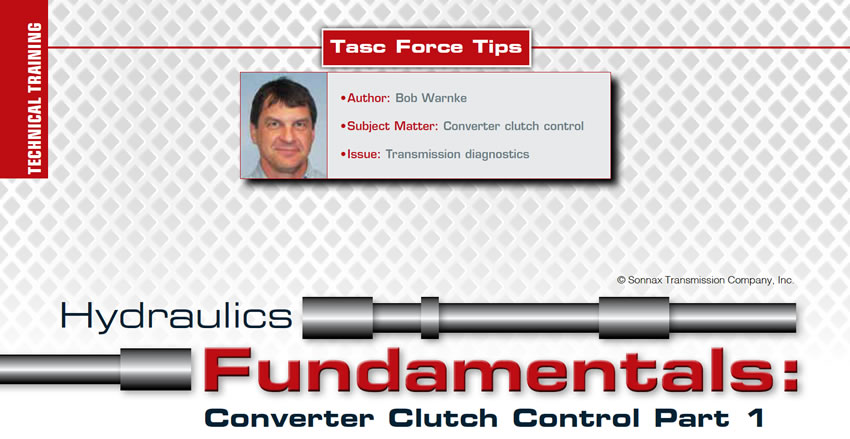
Hydraulics Fundamentals: Secondary Regulators
Jim Dial discusses the importance of understanding hydraulics when working with transmissions.
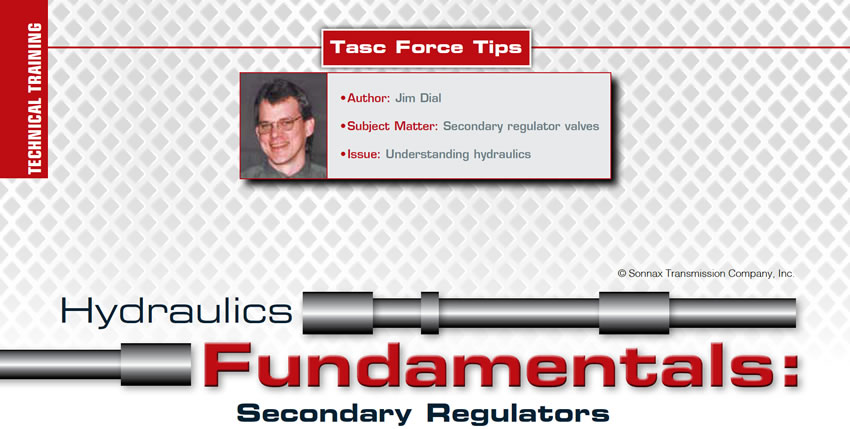
Helping or Hurting
When you cut open a rebuilt converter, you never know what you will find. There are always similarities in the converters because most rebuilders follow the same basic format. It is the differences in the rebuilt converters that make them stand out.
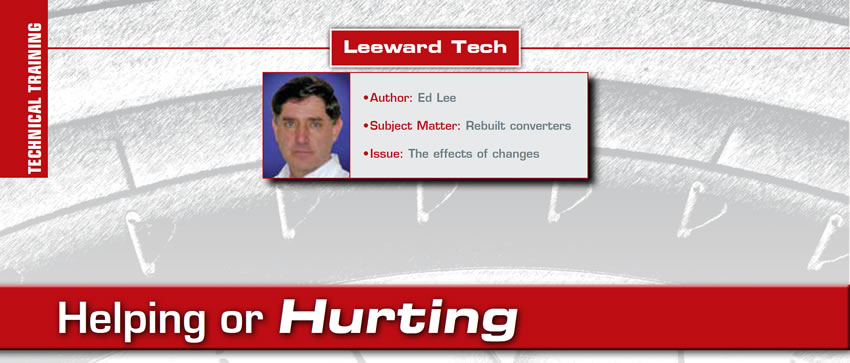
Another Heart Break
A 2014 Nissan Versa arrives at a shop on a flatbed with a customer complaint of a loss of engine power. The reason it was brought to a transmission shop is the type of engine power loss it had. In park or neutral, the engine can rev up to 2500 rpm easily. Even in drive with the brakes applied, you can reach stall speed torque with no power loss issues at all. But, the moment the brake is released to launch forward, as soon as it starts to roll there is an immediate loss of engine power.
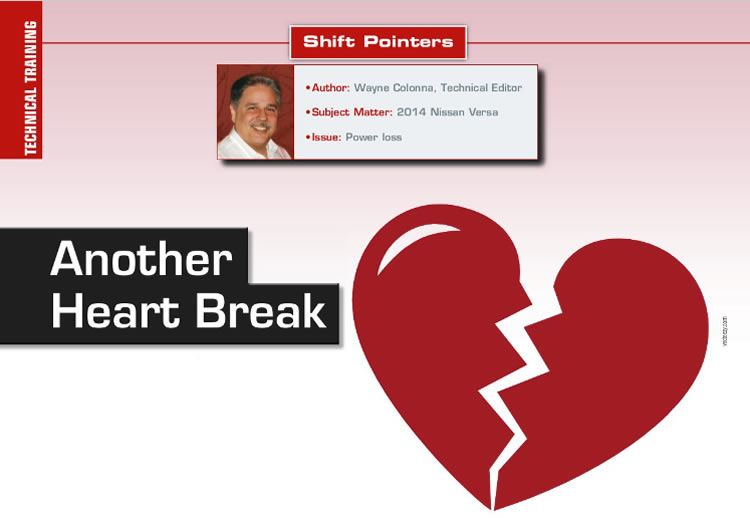
CVT 7 Troubles
The CVT 7 used in Mitsubishi and Nissan vehicles (Figure 1) is unique in that between the pulley assembly and the differential is a planetary gear set controlled by a reverse brake, a low brake and a high clutch.
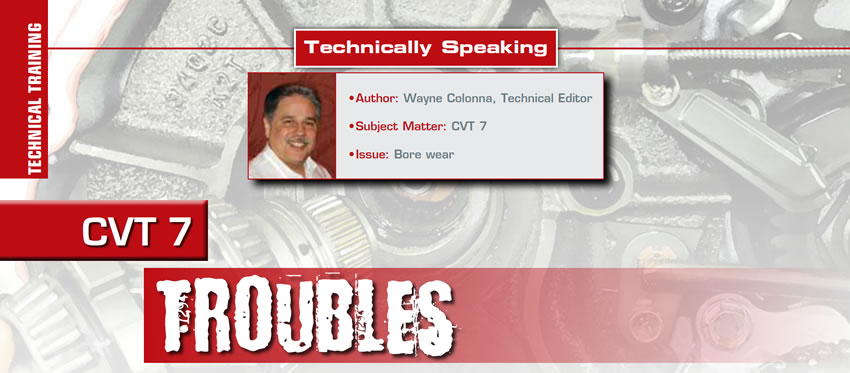
Suburu 4AT Phase ll Version ll Control and Valve Body Changes
Sometime at the beginning of the 2004 model year, Subaru redesigned the 4AT Phase ll Control system that placed the transfer clutch control solenoid into the valve body. The new design valve body (referred to as Version II) contained 3 clutch control solenoids, 2 brake control solenoids, a TCC and pressure control solenoid (Figure 1).
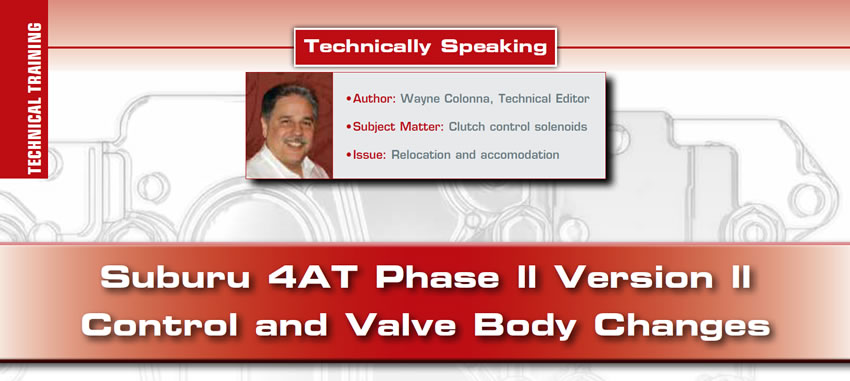
Hydraulics Fundamentals: Accumulators & Shift Feel
Accumulators and their circuits have been used for years as the primary method for controlling shift feel. These components are designed to modify a shift by essentially acting as a shock absorber for the fluid pressure that is applying a clutch, brake or band. Cushioning of this high pressure allows the apply component to engage gradually, instead of slamming on and rattling parts and bones alike.
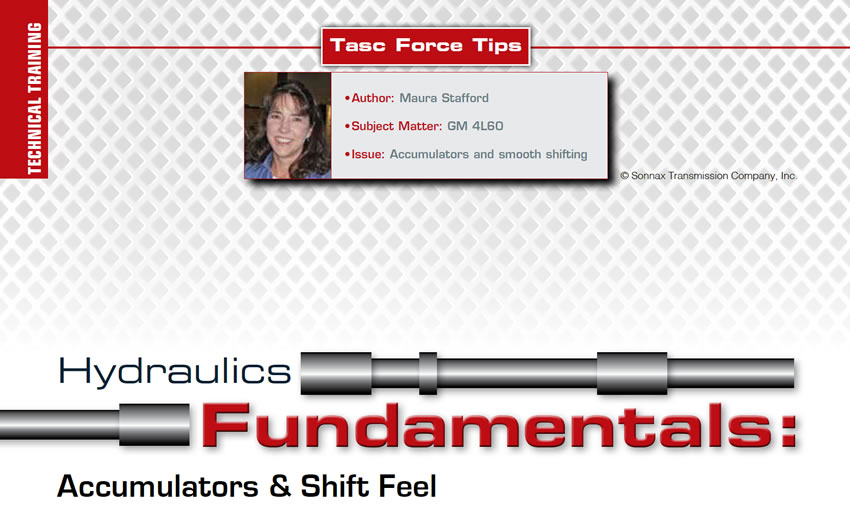
Hydraulics Fundamentals: Main pressure regulator valve lineups
As today’s transmissions continue to increase in complexity, from growing involvement in electronic controls to a seemingly exponential increase of available gear ratios, one concept remains the backbone of automatic transmissions: hydraulics. Forces, pressures and flow rates are critical considerations in all stages of a transmission’s lifecycle.
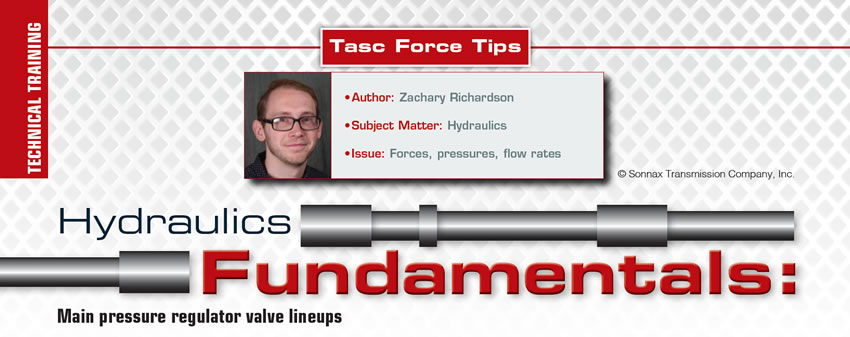
Ford & GM 10R80/10L90 Speed Sensor Functions
There are four internally mounted two-wire Hall-Effect speed sensors found in this shared Ford and GM 10-speed venture (Figure 1). Although all four-speed sensors work the same way, one of them is slightly different than the other three. A 9-volt supply from the TCM is sent to all four sensors and a signal from each sensor returns directly back to the TCM.
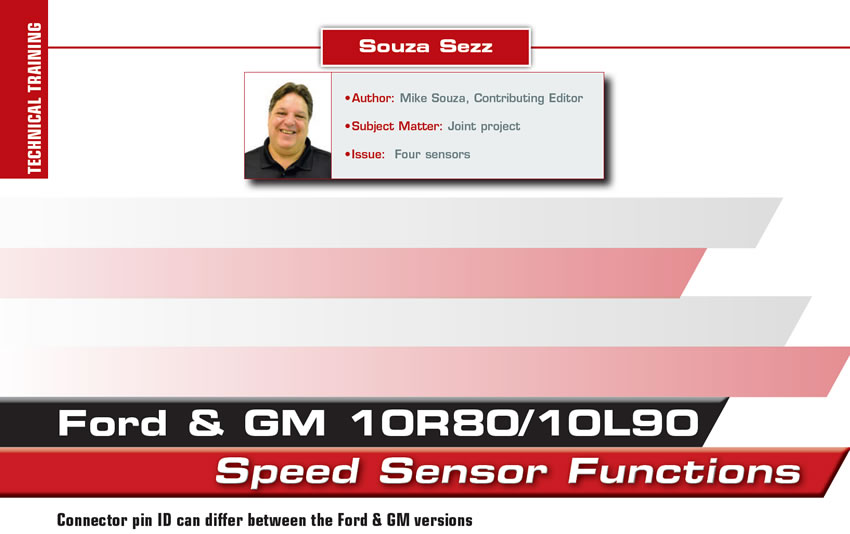
Mazda’s SkyActiv-Drive 6-speed automatic unit: Magnet is Loaded with Metal
The progressive development of Mazda’s “SkyActiv®” engine and transmission has resulted in an engine that should be available in 2019 called the “SkyActiv-X.” The name SkyActiv given to this drivetrain reflects their back-casting developing method. They started with what they wanted to achieve regardless of how impossible it may seem, and work their way backwards to identify what made that goal seem impossible.
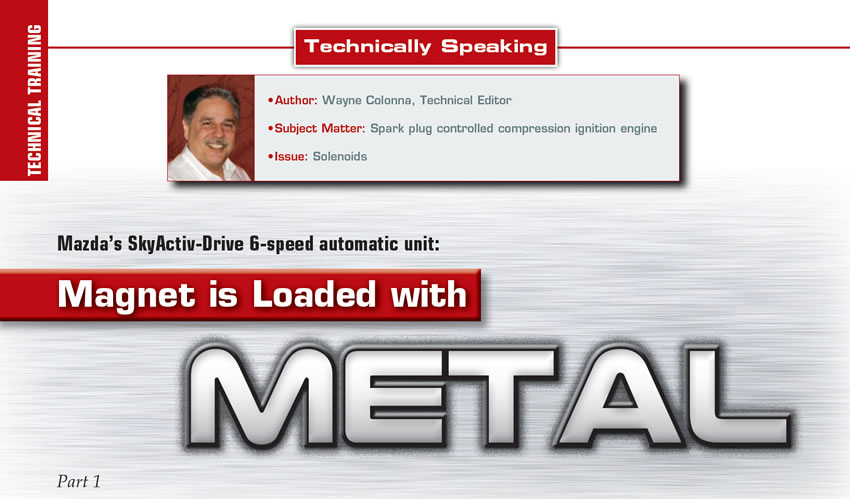
Ins and Outs of Torque Converters
Plotting the pathways of the oil that enters and exits the converter is not an easy task if you are only looking at the parts of the converter. Adding a stator support and an input shaft to the converter parts makes this task somewhat easier.
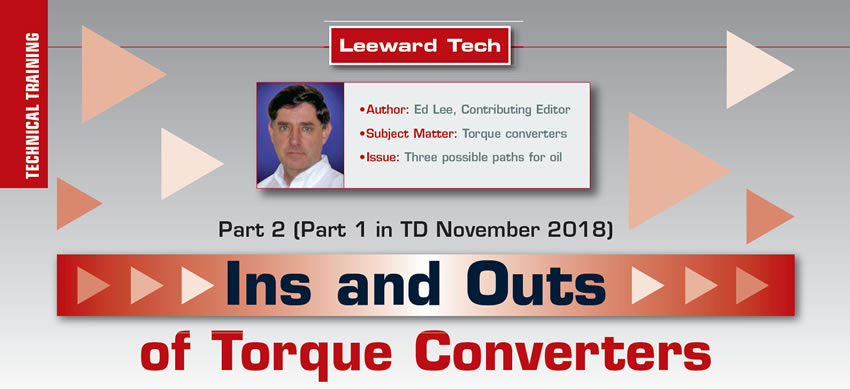
Is it a Bad Computer?
A 6T40 in a 2011 Chevy Malibu comes in to R.C. Trans and Repair in failsafe with a hard code P0601: Transmission Control Module (TCM) Read Only Memory (ROM). This code is straightforward. Verifying power and grounds to the TECHM are the initial checks to make. Once verified, replacing the computer would be a safe repair. Such was the case with R.C. Trans and Repair.

